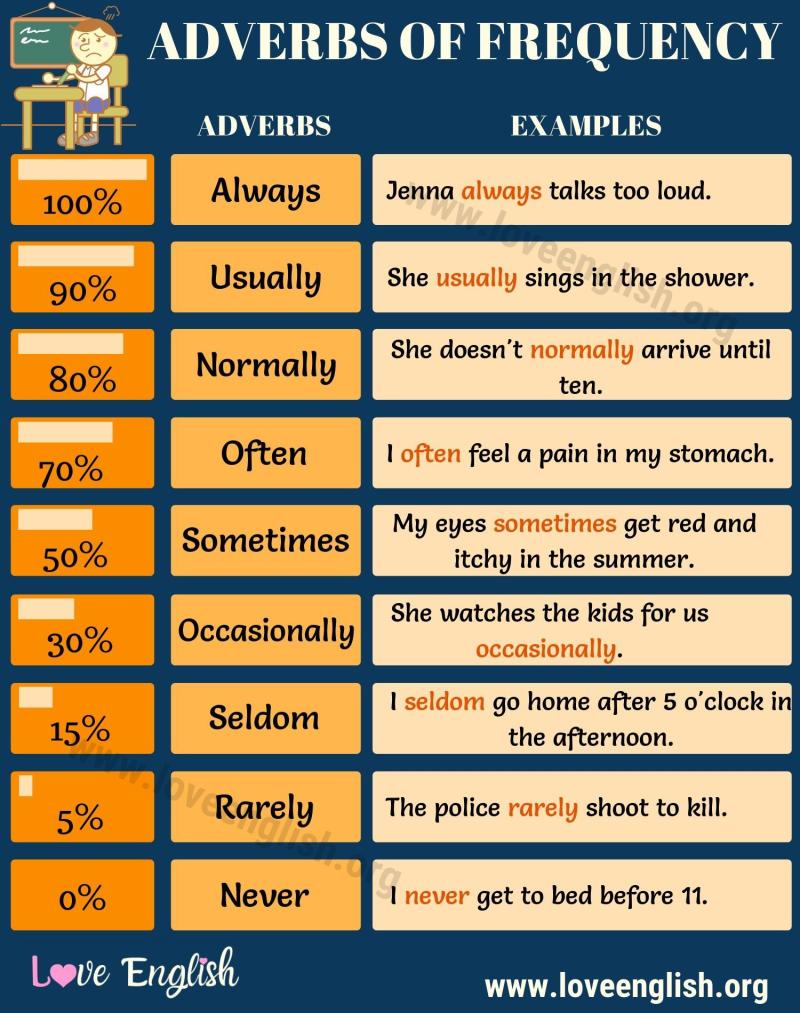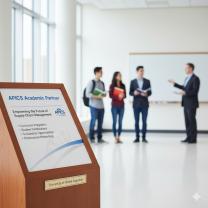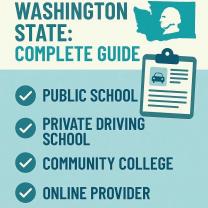How to teach adverbs of frequency in English?
Teaching adverbs of frequency in English can be engaging and effective with the use of interactive activities and practical examples. Here are some methods you can use to teach adverbs of frequency:
Introduction with Real-life Examples:Begin by explaining the concept of adverbs of frequency and provide real-life examples. Use sentences that students can relate to, such as "I always brush my teeth before bed" or "She rarely eats fast food."
Frequency Chart:Create a frequency chart with adverbs and corresponding percentages to visually represent the frequency of each adverb. For example:
- Always: 100%
- Usually: 80-90%
- Often: 70%
- Sometimes: 50%
- Rarely: 20-30%
- Never: 0%
Role-Playing and Conversations:Engage students in role-playing scenarios or conversations that involve the use of adverbs of frequency. This can be a fun way for them to practice using these adverbs in context. For example, have students discuss daily routines, hobbies, or habits.
Adverb of Frequency Song or Chant:Create a catchy song or chant to help students remember the order and meaning of adverbs of frequency. Set the words to a familiar tune, and encourage students to sing along. This can make learning more enjoyable and memorable.
Interactive Games:Use interactive games to reinforce the concept. For example:
- Board Games: Create a board game where students move forward or backward based on the frequency of an action in a sentence.
- Flashcard Games: Use flashcards with sentences containing adverbs of frequency. Students can take turns drawing a card and identifying the adverb.
Video Clips and Multimedia:Show short video clips or multimedia presentations that feature characters talking about their routines or habits. This visual reinforcement can help students understand the context in which adverbs of frequency are used.
Frequency Adverb Bingo:Create Bingo cards with different adverbs of frequency. Call out sentences or situations, and students mark the corresponding adverb on their Bingo cards.
Class Surveys:Conduct surveys within the class where students ask and answer questions about their habits using adverbs of frequency. This not only reinforces the language but also promotes interaction among students.
Writing Activities:Assign writing activities that require students to use adverbs of frequency in sentences or short paragraphs. Encourage creativity and personalization in their responses.
Review and Reinforcement:Regularly review adverbs of frequency throughout the course. Include them in quizzes, games, and activities to reinforce understanding.
Remember to adapt these methods to the proficiency level of your students and provide ample opportunities for practice. Integrating adverbs of frequency into various aspects of language learning helps students internalize the concept and use it naturally in their communication.
Strategies for teaching English adverbs of frequency
Teaching English adverbs of frequency can be an engaging and effective process when incorporating a variety of strategies and activities. Here are some effective strategies to consider:
Introduce the concept of frequency: Begin by explaining the concept of frequency and how adverbs modify verbs to indicate how often an action occurs. Use real-life examples and visuals to help students grasp the meaning of different frequency adverbs.
Visual representation: Create a frequency ladder or chart to visually represent the different frequency adverbs and their relative positions. This helps students understand the hierarchy of frequency and how to choose the appropriate adverb for a given context.
Contextualization: Provide students with opportunities to use frequency adverbs in meaningful contexts. Engage them in conversations, role-plays, or writing activities where they can practice using the adverbs naturally.
Games and activities: Incorporate fun and interactive games and activities to reinforce the use of frequency adverbs. Popular options include matching games, bingo, sentence completion exercises, and picture description tasks.
Real-life applications: Encourage students to identify and analyze the use of frequency adverbs in everyday situations. Have them watch videos, listen to conversations, or read texts and identify the frequency adverbs used.
Self-assessment and reflection: Provide students with opportunities to self-assess their understanding of frequency adverbs. Ask them to reflect on their progress and identify areas where they need further practice.
Differentiation: Adapt instruction to cater to different learning styles and abilities. Provide scaffolding for struggling students and offer enrichment activities for advanced learners.
Technology integration: Utilize technology tools to enhance the learning experience. Use interactive online games, apps, or digital presentations to engage students and reinforce concepts.
Cultural sensitivity: Be mindful of cultural differences in the use of frequency adverbs. Explain that there may be variations in how often certain actions are performed across cultures.
Regular practice and review: Provide ample opportunities for regular practice and review of frequency adverbs. Incorporate spaced repetition techniques to ensure long-term retention.
By implementing these strategies, teachers can effectively teach English adverbs of frequency, enabling students to use them confidently and accurately in their communication.













